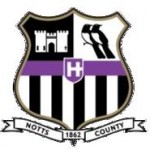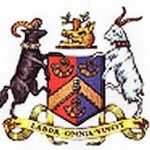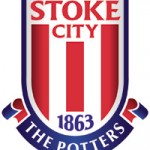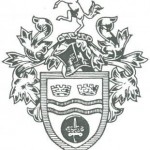Although football today is a multi-billion dollar globalised industry which has spread its commercial influence to all corners of the planet, sometimes it pays to look back into the game’s annals and revisit the humble origins of what has now become the most popular sport in the world.
In this article I look at the ten oldest football clubs still in existence today and try and put the magnitude of their impact upon the game into some sort of historical perspective.
Sheffield F.C. (1857)
The first football club to have ever become a formalised and independent organisation, the 152-year history of Sheffield FC has been inextricably linked with the progression of the game in Britain and the growth of football into the globalised entertainment industry it is today.
Established during the height of the industrial revolution in Britain’s most prolific steel-producing centre, Sheffield FC quickly became an integral force during the gradual installation of football as a more organised and systematic athletic discipline in the UK.
After the club’s foundation in 1857 the committee began to methodically analyse the various loosely regulated codes of mob football that dominated the British game at the time, eventually arriving at a standardised set of rules which were adopted by the Sheffield Football Association, football’s first formal governing body, at its establishment in 1857.
In 1863, just six years after the formation of the Sheffield FA, the club became a founder member of the Football Association, the first national bureaucracy designed solely for the purpose of administrating the game of football and a hugely significant development in the game’s journey towards professionalism.
Despite now playing their football in the semi-professional Northern Premier League, Sheffield FC’s impact on the game should not be underestimated. Indeed, the club should be lauded as a revolutionary influence and controlling presence on the early history of association football.
Hallam F.C. (1860)
Originally set up as a cricket club in 1804, Hallam FC was established just three years after their more famous Sheffield neighbours and further enhanced the “Steel City’s” credentials as the crucible of football’s modern era.
Perhaps the club’s most significant achievement was, in 1867, to triumph in the Youdan Cup, thought to be football’s first ever organised tournament. The competition was played using the Sheffield rules of the time, a code which had been initiated by the fledgling Sheffield Football Association in the late 1850s.
Although Hallam may narrowly miss out on the title of the world’s oldest club, the team does boast – according to the Guinness Book of Records – the most venerable ground on the planet. The Countrymen, as they are more commonly known, have played at their Sandygate ground for the entirety of their history and, although the arena now plays host to Northern Counties East League football, don’t look like vacating their historic premises anytime soon.
Cray Wanderers F.C. (1860)
Founded in the London suburb of Bromley by the workers on the London to Kent railway, Cray Wanderers were the first club to be instituted from the South of England, an important development
Despite a successful start to the club’s life in the early years of the twentieth century as part of the Kent League, Cray lost their way in the 1930s and dropped into the various amateur leagues of the region. Just under twenty years later the club regained its semi-professional status and achieved a degree of success in the London League with three league titles towards the end of the 1950s.
Today, in their 150th year, the club conduct their business and Isthmian League, the seventh tier of the English football ladder and, despite not perhaps having had the level of impression on the game of the likes of Sheffield FC, Cray Wanderers are a traditional workers team and can be proud of their role in kick-starting the professional era away from the industrial towns further north.
Wanderers F.C. (1860)
Along with Cray Wanderers, Wanderers F.C. – or Forest F.C. as they were originally known – was the first major footballing force to come out of the south of England, enjoying their most notable period of success throughout the 1870s.
Founded in the London borough of Battersea, Wanderers was originally composed of ex-pupils of the prestigious Harrow school and had a profound impact on the ideological direction of the Football Association in its early days.
Although the club enjoyed a significant role in the development of football as an increasingly organised and regulated mass sport in Britain, Wanderers is perhaps best known for its serial successes in the first decade of competition in the FA Cup. Not only did the club win the inaugural competition in 1872, Wanderers also won a further four times (1873, 1876, 1877 & 1878) in the same decade to emerge as English football’s first dominant force and a conspicuous influence on the years of football which followed both in the UK and on the European continent.
Worksop Town F.C. (1861)

Founded in the industrial heartland of north-east Nottinghamshire in 1861, Worksop Town Football Club was another of the game’s important early formally structured organisations and represented another significant area of growth in the spread of quasi-professionalised football throughout the United Kingdom.
Despite being one of Britain’s earliest clubs, Worksop Town have struggled to ever extricate itself from non-league football, a legacy perhaps not fitting with The Tigers’ wider influence on the game. The team currently play in the Northern Premier League Premier Division, the sixth tier of English football, and have recently undergone a series of complex ownership and ground issues which threatened to place the future of the 148 year-old club in jeopardy. The club have found a temporary home for the meantime and currently lie 11th in their division, continuing to be standard bearers for the compelling historical sporting legacy of which they are a central part.
Notts County F.C. (1862)

The oldest professional football club in the world, Notts County were founded in 1862 and have been trailblazers for the game ever since their genesis 147 years ago.
The oldest club in Nottingham by a mere three years – a small but important distinction for The Magpies’ fans – County were one of the twelve founder members of the Football League at its establishment in 1888 and have been a part of it ever since.
The club’s finest hour came in 1894 when County beat Bolton 4-1 to win the FA Cup and, with substantial recent investment in the club from Middle Eastern backers and the appointment of Sven Goran Eriksson as director of football, Magpies fans will be hoping that they won’t have to wait another 115 years for their club’s next major silverware.
It’s a new era for Notts County, and there’s every possibility that we will see the club climbing the Football League ladder at a rate of knots in the seasons to come.
Bradford Park Avenue A.F.C. (1863)

Not to be confused with the more illustrious Bradford City AFC, a side which has graced the Premier League as recently as 2001; the original Bradford Park Avenue AFC was founded in 1863 and was, for more than sixty years, a member of the Football League.
In its first guise, Bradford Park Avenue was inducted into the League in 1908 and, up until the outbreak of The Great War, enjoyed modest success in the top flight of English football. After the First World War, amidst the massive social upheavals it caused, The Avenue’s early progress was lost and the club plummeted down the leagues, a fall which culminated in their ejection from the Football League in 1970.
The early 1970s proved to be a dark time for the club, financial difficulties dragging The Avenue into turmoil and, ultimately, liquidation. However, the club was not allowed to die a humiliating death, instead being reborn as an amateur team which eventually made a return to semi-professionalism in 1988.
Over the last twenty years the club has moved up the semi-pro ladder and has reached the Northern Premier League, a veritable haven for some of the most historically gilded football clubs in Britain. With plans for a new stadium in the pipeline it would seem that Bradford Park Avenue can look forward to the future with a great degree of confidence.
Stoke City F.C. (1863)

Another of the twelve founder members of the Football League and the oldest club currently playing in the Premier League, Stoke City has enjoyed something of a recent renaissance and has become the modern standard bearers for the origins of British football.
The Potters’ most famous son, Sir Stanley Matthews, burst onto the scene in the 1930s and guided his hometown side to the Division Two championship and established the club as one of the finest, most attractive in Britain. By the time Matthews left for Blackpool in 1947 Stoke were a major force in the top flight, but his departure signalled a decline in the club’s fortunes, relegation following some years later in 1953.
For much of the period between the 1950s and the early 2000s Stoke were becalmed, a sleeping giant in the lower leagues before promotion back to the second tier in 2001/02 completely reinvigorated the club. The 2007/008 season saw The Potters promoted to the Premier League for the first time under the stewardship of the shrewd Tony Pulis. Since their promotion, Stoke has exceeded all expectations to establish itself as one of the top flight’s most efficient and close-knit sides, comfortably avoiding relegation last season and starting the 2009/10 season in fine form. This might just prove to be the most exciting period in the club’s extensive and fascinating history.
Nottingham Forest F.C. (1865)

Of all the teams represented on this list Nottingham Forest has been by far and away the most consistently successful over the last 146 years of the Football Association.
Founded in 1865, Forest enjoyed regional success during the early years of the club’s existence, eventually being inducted into the FA in 1892. Six years later Forest claimed their first major honour, winning the 1898 FA Cup with an emphatic 3-1 victory over bitter rivals Derby County.
Forest’s turn of the century success was followed sixty years later with another spell of glory when the club returned to the First Division and won the FA Cup for a second time in the late 1950s. That period laid the early foundations for the most successful spell in the club’s history when, under Brian Clough, Forest were twice crowned champions of Europe.
Clough’s arrival in 1975 saw a huge upturn in the club’s fortunes, Forest winning promotion back to the First Division in 1977 and winning the league title in their first season back in the top flight. Over the eighteen years Clough was in charge at The County Ground Forest won 1 League title, 2 European Cups, 4 League Cups, 1 European Super Cup, 1 Charity Shield and 1 Full Member’s Cup as the club from the banks of the River Trent underwent a transformation from a small provincial team to one of the best clubs in Europe.
Although The Reds haven’t reached the dizzy heights of the Clough era in recent years, the club is currently enjoying a sustained run of form and sits just beneath the play-off places in The Championship. If current manager Billy Davies can continue to improve the fortunes of this historic club then there’s every chance Nottingham Forest fans could see their club rise back to the top tier of English football in the near future.
Sheffield Wednesday F.C. (1867)

Originally formed as a cricket club which played its matches on a Wednesday, Sheffield Wednesday football club was eventually conceived in 1867 and joined the Football League, albeit not as a founder member, in 1892.
One of English football’s more successful sides, Wednesday have won four First Division titles in their history to go with three FA Cups and one League Cup triumph which came in 1991. Indeed, of the club’s 107 years as a member of the Football League 66 have been spent in the top flight, an impressive record and one which has ensured Wednesday’s status as one of the most prestigious teams in British football.
Although The Owls have not graced the top flight since the 1999/2000 season, Wednesday’s fortunes have picked up of late as the club have recovered from a brief spell in the third tier. Wednesday are now looking to re-establish themselves as a force in The Championship and, ultimately, the Premier League.
Also See:
Football Clubs – by League
Football’s Greatest Clubs
The Greatest Football Teams Of All Time
The Worst Football Teams Of All Time
Add Sportslens to your Google News Feed!


